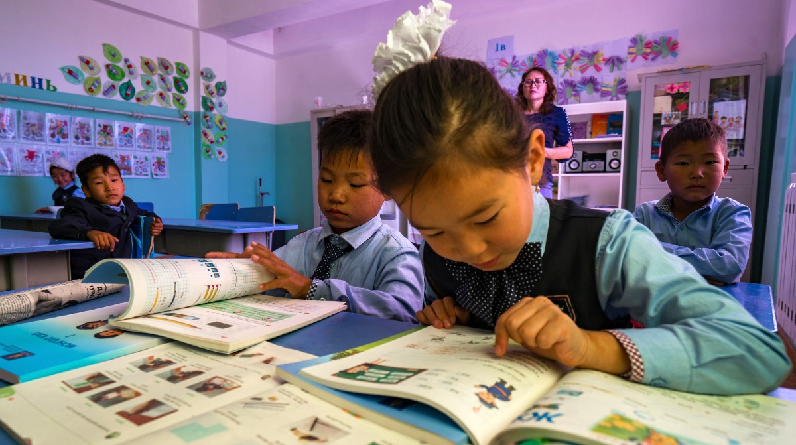Scientists have agreed that humans are a major factor in climate change, and new data shows that the rate of warming is higher now than at any time in the past. For this reason, world leaders will be meeting this month in Paris for the United Nations Climate Change Conference to try to reach a new international agreement on climate change, whose main goal is to limit warming to well below 2°C (3.6°F). In addition to the risks already mentioned—to food and water supplies, infrastructure, ecosystems, health, and the likelihood of conflict—rising temperatures also pose threats to these things themselves. Human-caused climate change is already having devastating effects, and preventing further worsening and preparing for inevitable changes are urgent concerns. In this respect, schooling is essential.
The use of technology, institutional changes, and behavioural adjustments are all necessary for either mitigation or adaptation to be successful. In a similar vein, the Intergovernmental Panel on Climate Change has stressed the importance of adopting a variety of approaches to environmental protection. These strategies should include both policy and incentive-based approaches and should involve all relevant actors, from the average citizen to national governments and international communities. Adaptations to climate change require a combination of institutional and behavioural changes at the national, regional, and personal levels.
Individuals may be slow to adopt mitigation and adaptation measures due to a variety of factors, such as ignorance of climate change risks, uncertainty about the results of their actions, inexperience with behavioural change, or a lack of financial resources. Therefore, there are numerous plausible grounds for believing that various educational approaches can aid in the direct and indirect surmounting of these obstacles.
To begin, one of the most important ways people acquire knowledge, skills, and competencies that can impact their mitigation practises and adaptation efforts is through formal schooling. Learning to read, write, and do basic arithmetic is made possible in a school setting unlike any other.
Students’ meta-cognitive abilities, including their capacity for classification, deductive reasoning, and the identification of causation, are put to the test as they progress through the school grades. This abstract mental workout modifies the ways in which college-educated people think, reason, and address challenges. Indeed, empirical research has demonstrated the benefits of higher-order cognition in terms of both risk evaluation and decision making. These are important facets of reasoning when assessing risks and selecting appropriate responses.
See Also: Moved while on hunger strike, Italian anarchist Alfredo Cospito sparks protests
Education also improves future planning and resource allocation, as well as the acquisition of knowledge, values, and priorities. A person’s adoption of, say, disaster preparedness measures, can be aided by their education if they gain a better understanding of the connection between preparedness and disaster risk reduction. A person’s level of education may also affect their ability to take preventative action. New research shows that a person’s willingness to invest in their future (whether in the form of money, health care, or more schooling) shifts as a result of their exposure to higher levels of education. Such long-term thinking can sway people to take measures of adaptation and mitigation that may not reap any rewards for many years.
Education may have other effects, such as lowering vulnerability or increasing support for mitigation efforts, in addition to these direct effects. As a first step, schooling raises a person’s economic standing because of the correlation between education and increased salary. This gives people the freedom to make choices about their lives, such as investing in expensive disaster insurance, relocating to safer neighbourhoods, putting in place renewable energy systems at home, or accepting carbon taxes.
Second, numerous empirical studies have demonstrated that individuals with higher levels of education have access to a wider variety of informational resources. More educated people, in addition to having easier access to weather forecasts and warnings, also have a deeper grasp of complex environmental issues like climate change.
When people are aware of resources for learning about mitigation strategies and adaptation options, they are more likely to adopt those practises. In fact, there is evidence linking environmental literacy and climate change mitigation practises like eating climate-friendly foods, driving fuel-efficient cars, and practising conservation.
Higher levels of social capital are another indicator of educational attainment. Communication about a sense of risk and the desire to take preventative action is more likely to occur within the context of social networks and recreational activities. It is clear that education can promote and foster sustainable lifestyle and consumption by expanding people’s access to information, boosting their social capital, and increasing their income and other economic opportunities.
Despite these promising results, education has not received enough attention as a vital tool in the fight against climate change. Education, especially (at least) secondary school, is important for reducing vulnerability to climate change, according to recent research from the Wittgenstein Centre for Demography and Global Human Capital in Vienna. It was argued that a portion of the Green Climate Fund should be used to promote universal secondary education because it improves disaster responses, reduces loss and damage, and helps with recovery after disasters.
Similarly, studies have found that educational attainment is a significant factor in determining environmentally responsible behaviour and consumption. Recent posts on this site’s other blog have shown that people with more education are more likely to be concerned about climate change and to take steps to reduce their contribution to global warming. The number of countermeasures rises as students advance in age, as shown in the following figure.
The more educated not only take more measures to slow climate change, but their level of education also affects how much they worry about the issue. To rephrase, those with higher levels of education are taking greater measures to curb greenhouse gas emissions than those with lower levels of education, despite sharing the same level of concern about climate change.
